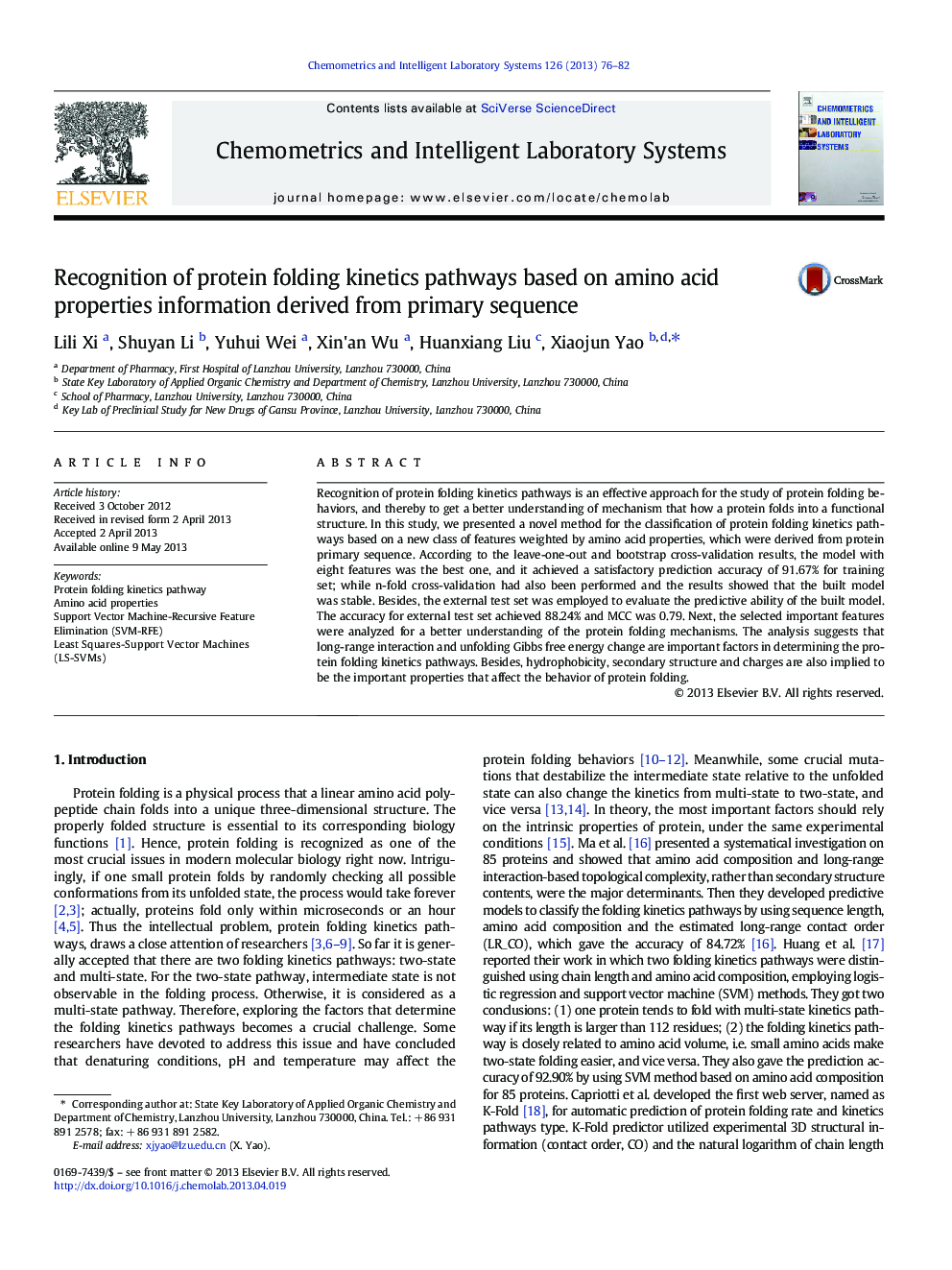| Article ID | Journal | Published Year | Pages | File Type |
|---|---|---|---|---|
| 1181377 | Chemometrics and Intelligent Laboratory Systems | 2013 | 7 Pages |
•Features weighted by amino acid properties are used to represent protein sequence.•A stable and predictive model is built to recognize two folding kinetics pathways.•The amino acid properties affecting folding kinetics pathways are explored.
Recognition of protein folding kinetics pathways is an effective approach for the study of protein folding behaviors, and thereby to get a better understanding of mechanism that how a protein folds into a functional structure. In this study, we presented a novel method for the classification of protein folding kinetics pathways based on a new class of features weighted by amino acid properties, which were derived from protein primary sequence. According to the leave-one-out and bootstrap cross-validation results, the model with eight features was the best one, and it achieved a satisfactory prediction accuracy of 91.67% for training set; while n-fold cross-validation had also been performed and the results showed that the built model was stable. Besides, the external test set was employed to evaluate the predictive ability of the built model. The accuracy for external test set achieved 88.24% and MCC was 0.79. Next, the selected important features were analyzed for a better understanding of the protein folding mechanisms. The analysis suggests that long-range interaction and unfolding Gibbs free energy change are important factors in determining the protein folding kinetics pathways. Besides, hydrophobicity, secondary structure and charges are also implied to be the important properties that affect the behavior of protein folding.
